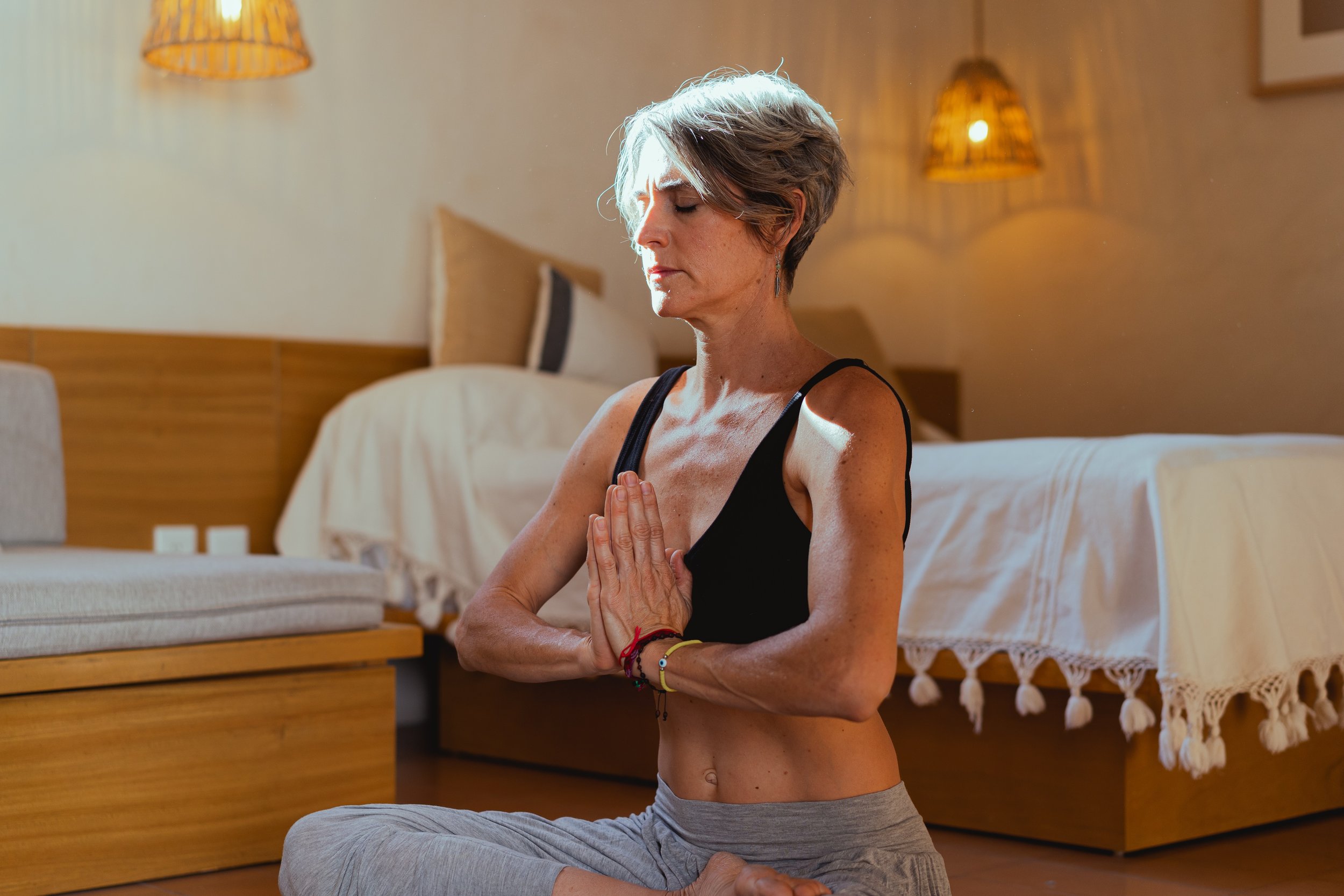Simple Techniques for Reducing Anxiety
I am often asked by new clients, "What is the best way to deal with anxiety?" My answer is always the same. "If you study your thoughts and learn to change what you think about, then you will solve your problems with anxiety". I believe that is quite doable if the client is willing to learn to observe their thoughts for a time and become familiar with their own thinking patterns. Only after becoming familiar with these patterns can they effectively begin to change them. It comes down to this simple statement: Change your thoughts, and that will change your emotions. This is called “Mindfulness” or “Mindful Meditation”. Certainly emotions are influenced by other things (i.e. hormones and genetics), but most of the time emotions are responding to our thoughts. If we are pessimistic, cynical, and negative, then we will view the world as threatening or unfriendly. The result will be that we experience negative emotions such as anxiety, depression, anger, hate, even hopelessness and despair. It is a clear response to our thoughts or perceptions and though the emotions that result may be powerful, it doesn't mean that they can't be redirected if we first learn to redirect our thoughts.
There are two suggestions that I make to new clients. First is to do some reading on the subject of anxiety. It was Sir Frances Bacon in 1597 who said, "Knowledge is indeed Power". In other words, even a small amount of knowledge can be a huge advantage in solving the problem of controlling a client's anxiety. So I ask clients to dedicate at least one hour a week to reading and practicing the exercises in the book that I heartily recommend on this topic.
It is entitled "The Anxiety and Phobia Workbook" by Edmund Bourne, Ph.D. It has over 20 coping skills that it details, and it goes into great detail explaining the importance of developing these skills to gain control over anxiety. Not all the skills he outlines work for everyone; but is important to try each one out to find the ones that do work for each client. These become the topics for our discussions as I coach clients in how to best develop coping skills to reduce and then eliminate anxiety.
The second suggestion that I make to new clients is to learn the technique called Autogenics Relaxation Training. It is a technique that elicits our naturally occurring Relaxation Response. This is the exact opposite of the "Fight or Flight Response" (you can read about that in one of my other Blogs). The Relaxation Response naturally calms clients down and sometimes even makes them feel comfortably drowsy. It is a very slow response and requires some work to consistently get this response to activate in a predictable manner. Like all good habits, it takes at least 4–6 weeks to be ingrained as an effective coping skill. Both the “Fight or Flight Response” and the Relaxation Response are a part of the brain called the Limbic System.
Here's how it works. First, it is necessary to become familiar with Abdominal Breathing. Now, of course you have been breathing all your life (duh); however, this is a special type of breathing that requires you spend some time being mindful of how you breathe. Mindful breathing simply means feeling your breath go through your nose, sinuses, throat, chest and then deep into the very bottom of your lungs. It needs to be slow, gentle, and deep. Try this for about a minute, and you will begin to feel your body change ever so slightly to becoming more relaxed, or pleasantly warmer, or pleasantly feeling heavier or even pleasantly lighter. Practice this several times a day so that you are more aware of your breathing and making the changes so that it becomes normal to do Abdominal Breathing. This is something that you can work on long term, but for today, just get the idea that this is the first thing to do in this little exercise. The next thing I would like you to do is read the script below out loud to yourself when you are alone and won't be disturbed for 10 minutes or longer. By all means, don't try this when you are driving or in a position when you have to be able to quickly respond to an event that requires your full attention (i.e. babysitting, watching your TV or cell phone). You may eventually want to use this script to make a tape recording to play back to yourself so that you can do this exercise with your eyes closed for maximum effect. The use of this Autogenic Script will seem silly at first, and maybe even boring. That's OK. The purpose is to give you something to think about that is not going to cause you anxiety and may even feel nurturing and comforting to you. The phrases are directed to your unconscious mind and may simply bore your conscious mind. Here's the script. When speaking the words imagine that you are talking to a child or someone who is very sensitive so that your words are soft and convey a sense of nurturing and encouragement.
My scalp is calm and relaxed.
My scalp is calm and relaxed.
My scalp is calm and relaxed.
My forehead is calm and relaxed.
My forehead is calm and relaxed.
My forehead is calm and relaxed.
My eyes are calm and relaxed.
My eyes are calm and relaxed.
My eyes are calm and relaxed.
My jaws are calm and relaxed.
My jaws are calm and relaxed.
My jaws are calm and relaxed.
My throat is calm and relaxed.
My throat is calm and relaxed.
My throat is calm and relaxed.
My neck is calm and relaxed.
My neck is calm and relaxed.
My neck is calm and relaxed.
My shoulders are calm and relaxed.
My shoulders are calm and relaxed.
My shoulders are calm and relaxed.
My spine from my head to my tail bone is calm and relaxed.
My spine from my head to my tail bone is calm and relaxed.
My spine from my head to my tail bone is calm and relaxed.
My heartbeat is calm and relaxed.
My heartbeat is calm and relaxed.
My heartbeat is calm and relaxed.
My lungs breathe easily and deeply.
My lungs breathe easily and deeply.
My lungs breathe easily and deeply.
My abdomen is calm and relaxed.
My abdomen is calm and relaxed.
My abdomen is calm and relaxed.
My right arm from my shoulder to my fingers is calm and relaxed.
My right arm from my shoulder to my fingers is calm and relaxed.
My right arm from my shoulder to my fingers is calm and relaxed.
My left arm from my shoulder to my fingers is calm and relaxed.
My left arm from my shoulder to my fingers is calm and relaxed.
My left arm from my shoulder to my fingers is calm and relaxed.
My right leg from my hip to my toes is calm and relaxed.
My right leg from my hip to my toes is calm and relaxed.
My right leg from my hip to my toes is calm and relaxed.
My left leg from my hip to my toes is calm and relaxed.
My left leg from my hip to my toes is calm and relaxed.
My left leg from my hip to my toes is calm and relaxed.
In the center of my being I am calm and relaxed.
In the center of my being I am calm and relaxed.
In the center of my being I am calm and relaxed.
In my Heart and Soul I feel the warmth of God's Love for me.
In my Heart and Soul I feel the warmth of God's Love for me.
In my Heart and Soul I feel the warmth of God's Love for me.
I accept and love my Self just as I am right now.
I accept and love my Self just as I am right now.
I accept and love my Self just as I am right now.
And so it is becoming more and more true as I repeat these words.
And so it is becoming more and more true as I repeat these words.
And so it is becoming more and more true as I repeat these words.
This is the end of the exercise. It will not initially feel as powerful as it does later after you have practiced it at least twice a day for a week. Like anything else "Practice makes Perfect" and you will become infinitely more effective initiating the Relaxation Response the more you practice it. Incidentally this exercise works well as a Night time Meditation to use before bedtime or in the middle of the night should you awaken.
Let me know what you think of this by writing me at murrell_m@sbcglobal.net. Enjoy!


